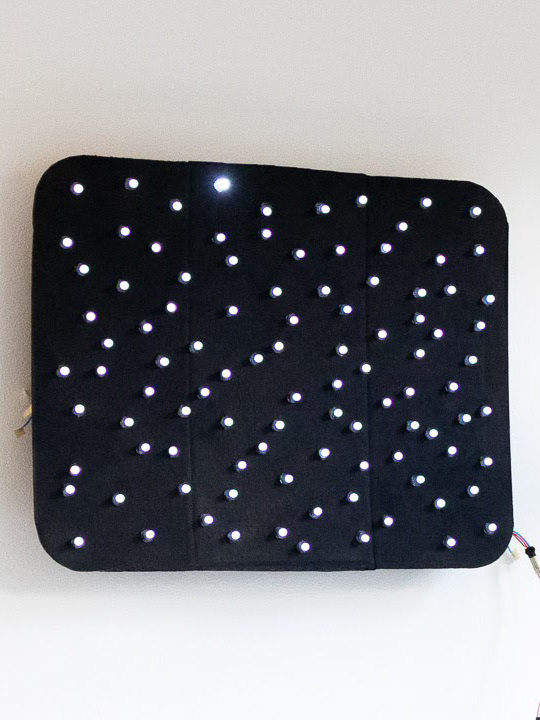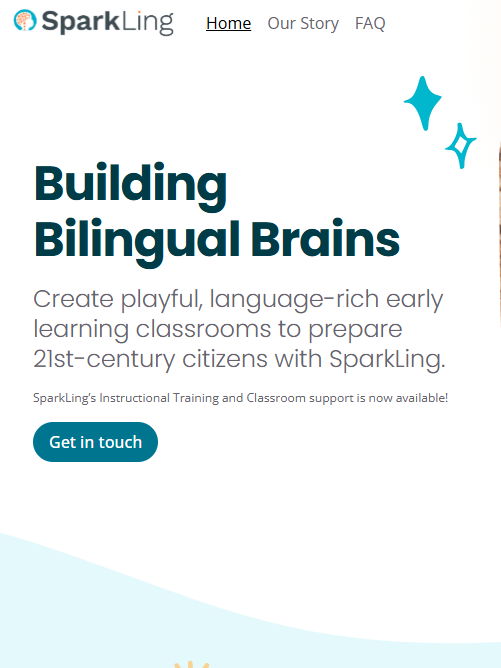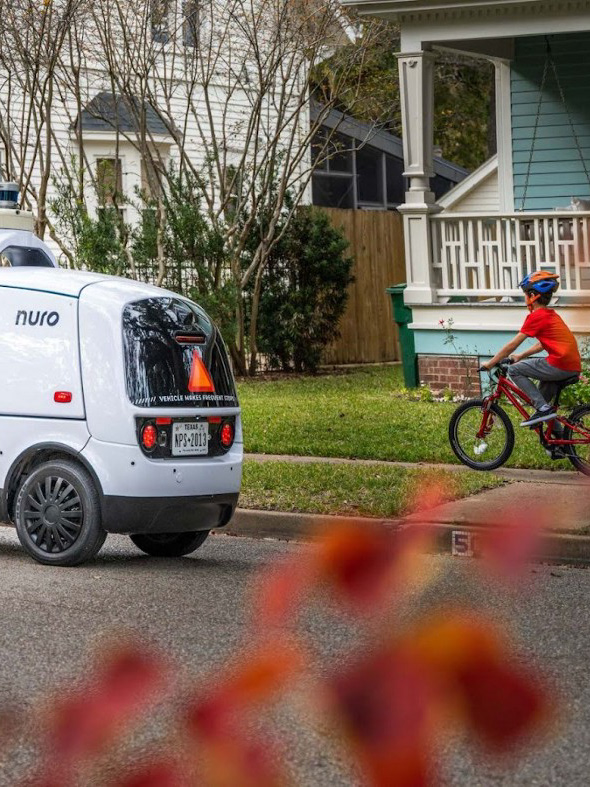Project Overview
Client: California Regional Centers
Duration: 7/2018-7/2019
Contributions: UX Research, Design Strategist, UX Writer
Team: Yvette Portello,Toni Donovan, Kate Jamison-Alward
Project Summary
I led Planned Parenthood through the end-to-end service design process, resulting in partnership with all California Regional Centers to provide sexual and reproductive health education to people with special needs.
Design Opportunity
My team taught at 62% of schools in the three northernmost counties in California and noticed a majority were not in compliance with California state education mandates (as outlined in the CA Healthy Youth Act). Sexual and reproductive health education is required for all students-including students in special day classes- twice before graduating high school.
With the support of my manager and teaching team, I was allowed to explore this issue, and what it meant in the context of my community.
How might we improve access to sexual and reproductive health education in California to include all populations?
Research
Laws are in place to ensure equality. Unequal education indicates systemic inequality. Systemic inequality is a wicked problem. To achieve a dynamic understanding of this issue, I explored pre-existing research, interviewed experts, spoke to end users, their families, and worked to keep my team aligned throughout the process.
Research Method 1: Naturalistic and Participatory Research
My job required for me to attend a variety of events within the community, schools, etc. I used this as an opportunity to learn more context by observing and speaking with other service providers, teachers, school administrators, families, and subject matter experts.
Tabling at a health fair 2018
Provider networking event 2018
Stakeholder Organizing and Mapping
Primary Stakeholders: People who use or need sexual or reproductive healthcare
Secondary Stakeholders: People who do not directly use sexual and reproductive health education
Tertiary Stakeholders: Organizational structures with vested interest in sexual and reproductive health education
As I started to gain a better picture of the community and its resources, I wanted to understand what outcomes result from a lack of this education, who else within my community provides it, and why schools have difficulty meeting mandates.
This stakeholder map ties the two largest tertiary stakeholders to primary stakeholders.
Findings
1. There were unmet sexual and reproductive health education needs from school-aged children to adults with special needs.
2. PPNorCal Health Education Specialists were uniquely positioned to provide this education because of our expertise and resources.
3. California Healthy Youth Act mandates are difficult for many schools and teachers to accomplish without supplemental education even with typical classes.
By this point, my efforts had gained traction. I started networking with the Redwood Coast Regional Center, and they started receiving several requests for such education from families, service providers, coordinators, etc. As PPNorCal is a nonprofit, I was able to provide services while refining how we modeled our intake: outcome process. I needed to learn more about education models if this was going to be effective, so I conducted a literature review.
Research Method 2: Literature Review
I conducted a literature review to learn about education: needs, topics, curricula, tools, and what factors inhibit service provision. I discovered the following key findings:
Some of the curricula included in the literature review.
Findings
1. This population is 7x more likely to experience sexual abuse than other populations and less than 13% of service providers in North America provide sexual and reproductive health education to populations who have special needs (Vice). This is often tied to lack of funding, coordination, and negative attitudes (World Health Organization).
2. As according to various curricula and the Sexuality Information and Education Council of the United States, the education provided to this population is only as effective as an educator's ability to adapt the content to the needs of the individual (Siecus).
As I gained a better understanding of the needs and barriers for providing education for this population, I geared up for a panel interview with Regional Center experts.
Research Method 3: Networking and Subject Matter Expert Panel Interview
By conducting a panel interview, I aimed to: learn about issues affecting local Regional Center clients, resources needed by Service Coordinators and other professionals, and establish a professional working relationship between the Regional Center and my team.
From networking and my panel interview with the Redwood Coast Regional Center, I learned:
Redwood Coast Regional Center office- where SMEs work tirelessly to provide quality services to people with special needs. Our panel interview was here.
Findings
1. Professional and non-professional advocates wanted sexual and reproductive health education for people who have special needs. This reflected findings from my literature review (Siecus).
2. The Regional Center wanted to collaborate on a plan with Planned Parenthood Northern California to provide this necessary education. This could bypass systemic barriers within the education system. It could also help adults access this necessary education.
I used these findings and experience to formulate some insights:
Insights
1. People who have special needs were vulnerable because of their occlusion from typical sexual and reproductive health education- not because of physical, mental or emotional disposition. This occlusion was symptomatic of unequal treatment, deficient understandings of abilities and desires, and a lack of dynamic education.
It is estimated that 90% of people with Disabilities experience sexual assault
2. Education needs to be tailored to the unique needs of the individual. This can prevent negative consequences and ensure positive outcomes.
Education needs to adapt to the learner, not the other way around.
3. Collaboration improves the quality of education. By incorporating a variety of stakeholders, we can abduct better methods, goals, objectives, and outcomes.
Education, in general, is better supported when students, instructors, and support collaborate.
Conceptualization
As I strategized with Regional Center SMEs, we determined we could formalize and finance services through a service design. To spread my learnings and to promote empathy, I developed some principles with the help of my manager.
Design Principles
1.Motivate empathy between PPNorCal staff and vulnerable populations. By relating individual stories to statistics, I could leverage our mission of education "that empowers all people."
2. Customize education to an audience or an individual to be effective. In this case, using information obtained through a Release of Information could ensure a holistic education experience.
3. Create collaborative networks. This can drive greater community impact from the individual to inter-organizational scale.
I would need to coordinate, mobilize and motivate my peers within my community and organization while iterating on a service design. To start, mapping out a service blueprint could help better conceptualize various touchpoints before getting into the granular logistics of education.
This design creates an ecosystem: Regional Centers, families, Planned Parenthood Education Staff, Service Providers, and Teachers provide a network of support
Service Blueprint
This service blueprint was approached with an emphasis on systems and collaboration in order to align research findings and design principles with outcomes.
Planned Parenthood Northern California's Service Design for Accessible Education
The Flow: Intake to Outcomes
This shows, at a high level, the general process required to create a lesson plan specific to the needs of the client.
Client-Specific Intake
This flow chart combines swim lane visualization to show how each of these steps is connected and sequential.
The intake process consists of:
1. Negotiate services between Health Education Specialists and Service Coordinator.
2. Develop goals through Release of Information in collaboration with stakeholders, family members, or other legally qualified individuals.
3. Implement education and record progress towards specified goals.
4. Track outcomes, report outcomes, and iterate depending on outcomes.
Features: Custom Education Design
Goals are specific, measurable, attainable, relevant, and time-bound. The instructional design is adjustable so students and instruction can achieve the goal of learning.
Varied resources are integrated into specific lesson plans.
Features: Release of Information
A Release of Information ensures a collaborative, dynamic, and informed education experience. Shared information is used to select tools, strategies, resources, and understand personal histories.
Everyone has complex needs.
Features: Iterative Education
This education model borrows mixed methods applied research from applied behavioral analysis. By combining qualitative and quantitative information in our progress tracking, we are able to apply findings in future iterations of lessons for a group or client.
Mixed methods and XD applied research and education design
Outcomes
This service design created an economically viable service utilizing digital and physical tools, created jobs, facilitates ongoing collaboration between complex stakeholders, and provides a much-needed service. This is what good business should be.
Growth
This service is scarce. Because of the need and value of this service, it caught the attention of academics, advocates, and practitioners. I added an addendum for group learning after starting a partnership with Dr. Laurie Sperry, a leader in the field. This created jobs within the Education department, and the option for a social learning environment. We scaled to individualized and group learning.
Impact
Planned Parenthood is the largest sexual and reproductive health education provider in the country. California has one of the largest populations in the US. From 2019-2023, Every Planned Parenthood in California had a contract on file with Regional Centers for these education and healthcare services.
PPNorCal has facilitated group training events for other service providers and specialists to better disseminate awareness and resources throughout Northern Ca.
PPNorCal has built a library of physical and digital resources including books, curricula, educational DVDs, apps and digital content, trainings and certifications for our staff.
A sample of highly specified education material from the accrued library
Feedback From my Manager
I'm proud of this feedback. This is how I go the extra mile.
This is an excerpt from my performance evaluation 9/20.
Looking Back and Looking Forward
Takeaways
1. Healthcare and education systems are dynamic and constantly evolving. To appropriately navigate these spaces, it was important to scaffold education services with an ability to adapt to new input.
2. Systemic opportunities require systemic responses. Collaboration can help provide a larger network for people who have special needs.
3. Service design has the ability to infuse communities with more equity. The design of these services allowed stakeholders to bypass systems that are reluctant to follow-through or offer education even when it's needed.
Reflection
"Accessible design is good design. It benefits people who don't have disabilities as well as people who do. Accessibility is all about removing barriers and providing the benefits of technology to everyone." -Steven Ballmer
Designing for an often occluded 15% of the world's population enables me to design for the remaining 85%. I can connect people to goods, products, services, and technology that create dynamic impact for users and stakeholders alike. This led me to my graduate studies at UW's Master's of Human Computer Interaction and Design program where I learned emerging methods and theory to design with a larger breadth, depth, and impact (see more projects below).





